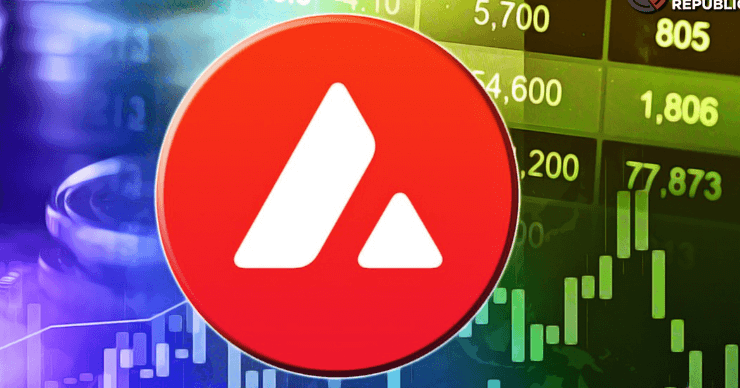Avalanche (AVAX) Price Analysis: Critical Support Levels and Potential Growth

In this analysis, we will explore Avalanche’s (AVAX) recent price movements and on-chain metrics to identify underlying trends and potential future price trajectories. Bitcoin’s 22% pullback from its peak has pressured AVAX, pushing it near the crucial $30 support threshold, sparking concern among investors. Let’s delve into the specifics behind this movement.
Current AVAX Price Action
The 4-hour chart of Avalanche showcases significant support and resistance levels highlighted by red lines. Currently, AVAX/USDT is trading at around $32 on Gate.io. A drop below the $30 range could initiate a wave of liquidations, exacerbating price declines.
The $30.74 level, close to the $30 mark, coincides with the 0.618 Fibonacci retracement line, making it a vital support. Keeping an eye on these levels can help investors and traders anticipate potential price movements.
Resistance levels to monitor include $33.26 (200 EMA), $34.06 (100 EMA), and $39.78. The 100 and 200 EMA in the 4-hour timeframe serve as significant trendline resistances during bearish trends.
Additionally, the Ichimoku Cloud is currently presenting a critical resistance zone. A breakout above the cloud could indicate a potential price recovery for AVAX.
On-Chain Analysis: Key Metrics
The average holding time for AVAX has dropped to levels observed during the Q4 2022 bear market. This trend suggests that investors are holding their coins for shorter periods, reflecting increased trading activity and diminished long-term confidence in AVAX.
As holding times decrease, more investors are trading AVAX rather than holding it. This surge in activity can lead to heightened volatility and more frequent price fluctuations. The reduction in holding time indicates a bearish sentiment among investors, who are less confident in AVAX’s long-term potential. This sentiment results in more frequent trading as investors seek to capitalize on short-term movements rather than hold for future gains.
At the time of writing, over 2 million small AVAX holders are at break-even or in losses. This scenario could lead to increased selling pressure as these investors might sell to minimize their losses, further driving the price down.
The majority of addresses hold up to 10 AVAX, reflecting a large number of small holders. However, larger holdings remain relatively stable, indicating that significant investors are maintaining their positions.
The number of addresses holding AVAX for less than one month has significantly decreased, indicating that recent buyers are exiting the market and cutting their losses. While this can reduce immediate price volatility, it also means less buying support from short-term traders, making the price more vulnerable to downward pressure from other market segments.
AVAX’s struggle below the $30 support level highlights its weakness following Bitcoin’s correction. This has induced fear among holders, with short-term investors exiting to cut losses. Should Bitcoin regain its upward momentum and approach all-time highs, it could positively influence AVAX’s price. If Bitcoin experiences further declines, AVAX might undergo a significant mid-term price drop, potentially falling below the critical $30 support level.
AVAX Price Projections and Recommendations
In a bearish scenario, AVAX could decline to $25 if Bitcoin’s price continues to fall. To mitigate risk, traders should wait for AVAX to drop below $30 before buying, which goes in line with AVAX price prediction models. An optimal entry position would be around $25-$27. Setting a stop loss at $24 is advisable to manage potential downside risks, with a target sell price of $40-50 to capitalize on the next upward movement.
What is Avalanche?
Avalanche is a decentralized, open-source blockchain platform designed to deliver high-performance, scalability, and customization for various decentralized applications (dApps) and financial primitives. Launched by Ava Labs in September 2020, Avalanche aims to address some of the most pressing challenges in the blockchain space, such as slow transaction speeds, high costs, and lack of interoperability between different blockchain networks.
High Throughput and Low Latency
Avalanche boasts a consensus protocol that enables high throughput and low latency, allowing the network to process thousands of transactions per second (TPS) with near-instant finality. This high performance is achieved through a novel consensus mechanism called Avalanche consensus, which is designed to be more efficient and scalable than traditional proof-of-work (PoW) or proof-of-stake (PoS) protocols.
Subnets and Customizability
One of Avalanche’s unique features is its support for subnets, which are customizable blockchain networks that can operate independently or interact with each other within the Avalanche ecosystem. This flexibility allows developers to create tailor-made blockchains with specific rules and functionalities to suit different use cases, from DeFi applications to enterprise solutions.
Interoperability
Avalanche is designed with interoperability in mind, enabling seamless communication between different blockchains, both within and outside the Avalanche network. This is achieved through the Avalanche-X framework, which facilitates cross-chain transactions and interoperability with other blockchain platforms, fostering a more connected and versatile ecosystem.
Decentralization and Security
Avalanche is built to be highly decentralized, with a large and diverse set of validators securing the network. The consensus mechanism is designed to be resistant to Sybil attacks and ensure robust security, making Avalanche a reliable platform for building secure decentralized applications.
Eco-Friendly Consensus
Unlike traditional PoW-based blockchains like Bitcoin, Avalanche employs a more eco-friendly consensus mechanism that significantly reduces energy consumption. This makes Avalanche not only a powerful and scalable blockchain platform but also a more sustainable option in the growing blockchain ecosystem.
Use Cases and Applications
Avalanche supports a wide range of applications across various industries. In the DeFi space, it enables the creation of decentralized exchanges, lending platforms, and synthetic assets. Its high throughput and low latency make it ideal for gaming applications that require fast and secure transactions. Additionally, Avalanche’s customizable subnets are suitable for enterprise use cases, allowing businesses to deploy private or consortium blockchains tailored to their specific needs.
